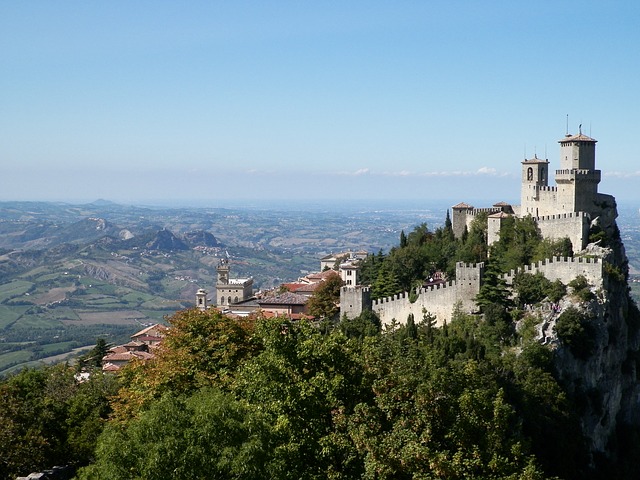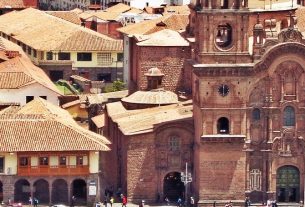Italy is one of the epicenters of the Covid-19 epidemic. With the high number of cases and deaths in the country, which attracts attention in the news, it is easy to forget that in northern Italy there is a micronation, the State of San Marino, with just over 30 thousand inhabitants, which is also suffering from the coronavirus.
Because it is such a small country, San Marino has the most deaths from the new coronavirus in the world. In proportional numbers, until April 10th: there are 1002 deaths for every one million inhabitants. In Italy and the USA this rate is 302 and 50 deaths, respectively.
It is in San Marino that nurse Priscila Moreira, our interviewee from Vozes, lives and works. Graduated from PUC Minas, she has worked in European health services since 2010 and is now on the front line against the coronavirus in the micronation.
Priscila’s life changed when the first case of coronavirus contamination hit the country. “Since February 25th, the date of the first case of coronavirus in San Marino, I have been part of the Covid-19 working group. In the group, we carried out epidemiological research, which would involve asking who the positive patient had direct contact with in the 14 days prior to the test being positive, contacting all these people and placing them in mandatory isolation at home. We prepared the database for the civil police, who are responsible for checking every day that these people do not leave their homes, not even to go to the supermarket. Someone externally, such as a neighbor or relative, must do the shopping during the period”, she explains.
Getting to know San Marino
Despite being a territory surrounded by Italy, San Marino – which is one of the 193 UN countries – is considered the oldest national state in the world: legend has it that the country was founded on September 3, 301.
The population today enjoys a high quality of life: San Marino has one of the highest per capita incomes in Europe, at around 55 thousand dollars. And tourism is one of the main drivers of the economy, as approximately three million people visit the country per year. As a comparison, this number is equivalent to half of what the whole of Brazil receives annually.
“The healthcare system here is one of the best I’ve ever seen. It is universal and free. And it’s free. In other words, any type of medicine the patient needs and any type of assistance. People here are very privileged in terms of health. It is maintained and defended by the entire political class and they want to maintain that level at all costs – and I hope they succeed. Let’s say that, at the end of the day, it’s a healthcare system that costs a lot, right? But it brings a lot of quality of life and health treatment to all citizens”, describes Priscila.
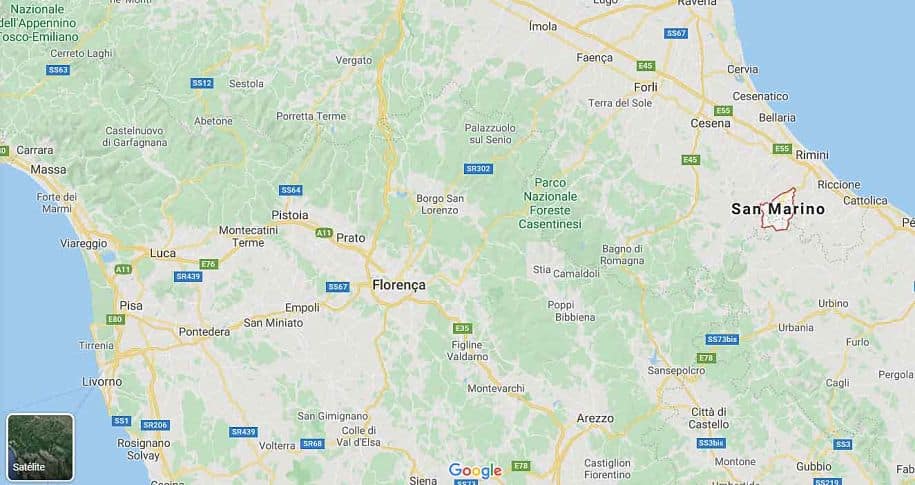
Preparation for the first case of coronavirus in San Marino
Because it started in China in December and only arrived in Europe in February, San Marino’s healthcare system had some time to prepare for the upcoming war operation.
“We knew about the case in China, we had already prepared a plan to care for a patient suspected of having Covid-19, but the first plan underwent major changes”. The first case was unexpected,
an elderly man who went for a walk in Rimini, a neighboring Italian city. “This meant that the virus was already widespread and within 10 days, half of the hospital was already occupied by patients positive for Covid-19”.
During the pandemic, Priscila highlights the work that has been done within the hospital and throughout the San Marino Health system. “Incredible work by the health staff, who transformed the hospital, closed several services, left the basics. And yet, we still find ourselves in this situation, until now the cases have not started to decrease.”
She says that the pandemic had a major social impact on the micronation. “The health system is saturated. All beds are occupied, even though new ones are opening. Intensive care has also grown and remains full. It’s not easy to buy the necessary material right now, because the whole world is buying it.”
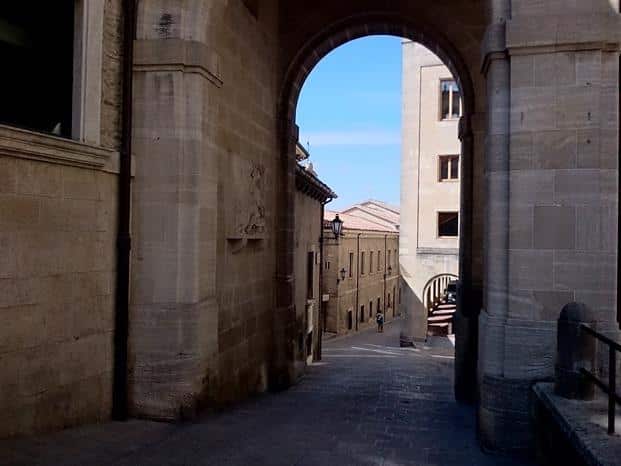
How Priscilla became a nurse in San Marino
Priscila lives in San Marino with her husband, Fabrizio, who is Italian, and the couple’s daughter, Teresa. But the process to be able to work there as a nurse was long.
When he moved to Europe in 2010, the first step was to learn the language and renew his diploma. “I started to inform myself to find out how I was going to validate my diploma here. The first thing I did was sign up for an Italian course. I already knew how to speak a little, but not much, and here in Italy they offer free Italian courses for foreigners. So I studied most of my time and it occupied me very well.”
According to Priscila, revalidating the diploma was not easy, as Italy is a very bureaucratic country, just like Brazil – it took her two years to do so. And they were two very intense years, where she and her husband were building their relationship, preparing their home, working and studying.
In the meantime, she had to go back to university, so she could “pay” for some classes and do many hours of internship. With everything ready, it was necessary to understand how San Marino worked and find a job.
“In my day-to-day work, I am part of a coordination group when the patient is discharged from the hospital, as he is a fragile patient who needs to be monitored at home. So our routine is to prepare the house for when this person returns, activate nursing services, nursing assistants, who can help these people at home, caregivers, structure and even material that the patient needs. My routine was very peaceful, as working hours started at 8 am and around 3:30 pm, 4 pm, I was free to return to my life at home, pick up my daughter from school, prepare things.”
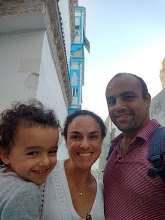
Changes to San Marino’s routine due to the coronavirus pandemic
Despite the country being in isolation, Priscilla and her husband’s hours outside the home have only increased – he also works in the health sector. “For three weeks, Fabrizio stayed at home with our daughter, because dermatology outpatient clinics were closed for routine consultations, as well as several other specialties. But, to help during this moment, he started doing what we call continuation assistance.
They are general doctors who serve the population during times when outpatient clinics and health centers are closed. At this time when the population is afraid and has so many doubts, they receive many calls and requests for consultations. Not to mention that San Marino is a country with a very high number of elderly people.”
As of April 10, San Marino had 344 confirmed cases of Covid-19. See up-to-date coronavirus numbers in San Marino and around the world. The work to save lives is continuous, exhausting and cannot stop. “Before, I worked every day, from 8 am to 3:30 pm, I dropped Teresa off at school and could pick her up calmly, after the afternoon snack. Now, I leave at 8 am and I don’t have time to come back. I usually get home around 6pm or 7pm and we will continue like this for as long as necessary.”
It’s a new routine within the chaos, for everyone, all over the world. “We work non-stop, I take lunch so I don’t waste time. In the hospital everything closed, coffee only in the machine and so on. The level of tension and stress is high, but the feeling of group work is overcoming all this.”
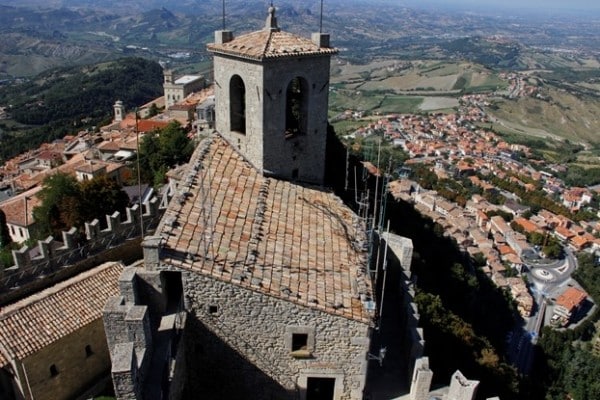
The emotions of a micronation during a pandemic
“Being a small country, San Marino works like a small city, everyone knows each other. So we know many people who were infected and many who unfortunately died along the way, in the last month. The population is afraid and is respecting the state’s orders.
We have a group of doctors and nurses who contact these people who are at home. Every day, they get in touch to find out their health status and if they need something, we have a team that goes to their homes to help these people. Even to be able to take grocery shopping, for example. Because they can’t leave the house.
The elderly are afraid, very afraid, because we have a higher death rate, right? Maybe because we have an even older population than Italy. They are at home, they only ask for outside help from people who can take care of them with the necessary devices. But let’s say they are well disciplined, they don’t leave the house and they also respect all restriction orders.”
The emotional level, of course, has greatly affected the population, especially those who are directly involved in combating the pandemic.
“There really is a lot of stress, a lot of tiredness, from everyone, because it’s been more than a month that we’ve been in this situation, but the structure was very well formed. The San Marino government has encouraged the population to spread the flag in the streets and on the facades of houses, giving a feeling of unity in the country.
This feeling of unity is really general, whether it be for people who are working, or even people who are at home. San Marino is already a country with a very nationalist population, very much so. You feel this pride that they have in their country and in what they have built throughout the year, at any given time.”
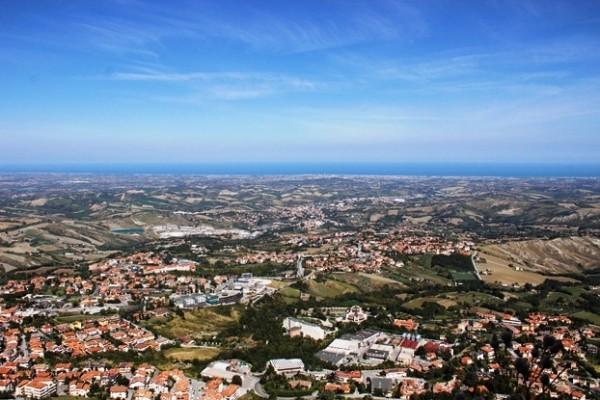
“Everything can change in life in a matter of days, weeks”
Priscila, who is from Minas Gerais, says that her experience in San Marino has served to alert family and acquaintances here in Brazil. “What I’m experiencing here helped them understand the gravity and how it can grow, how everything can change in life in a matter of days, weeks”.
And he adds: “Stay at home, stay at home and stay at home… It’s not easy, it has many economic, political and social consequences, but it’s the only way to reduce the speed of transmission. Do not visit friends or relatives. The media is here to help us stay close. Always wash your hands, clean the house constantly and don’t forget to leave your shoes outside the door.”
Priscila has already spread the message, but it is always good to remember that when a person in Brazil presents respiratory symptoms – fever, cough, sore throat or difficulty breathing – the doctor will prescribe isolation, issue a certificate for the patient and all people residing in the same household (even if they do not present symptoms) for 14 days, in accordance with Ordinance No. 356 of March 11, 2020.
While the light at the end of the tunnel doesn’t appear, the only way is to hope for better days. “We still don’t have any conditions to think about the end of this moment. We are working hard and the rules are strict, but the numbers still do not show a reduction in infections. But we will not give up or lose strength!”
The Voices
Vozes is a special newsletter, sent every fortnight, where we tell stories of extraordinary people and projects, who use the world of travel to transform the world. From time to time the content is published here on the blog too, but if you always want to receive the texts, and first hand, subscribe to our newsletter. It’s free and you also get an ebook full of tips for planning your first trip abroad.
If you want to follow what we’ve already done:
Sign up for our newsletter

Sign up for our newsletter and stay up to date with exclusive news
that can transform your routine!
Warning: Undefined array key "title" in /home/storelat/public_html/wp-content/plugins/link-whisper-premium/templates/frontend/related-posts.php on line 12
Warning: Undefined array key "title_tag" in /home/storelat/public_html/wp-content/plugins/link-whisper-premium/templates/frontend/related-posts.php on line 13

